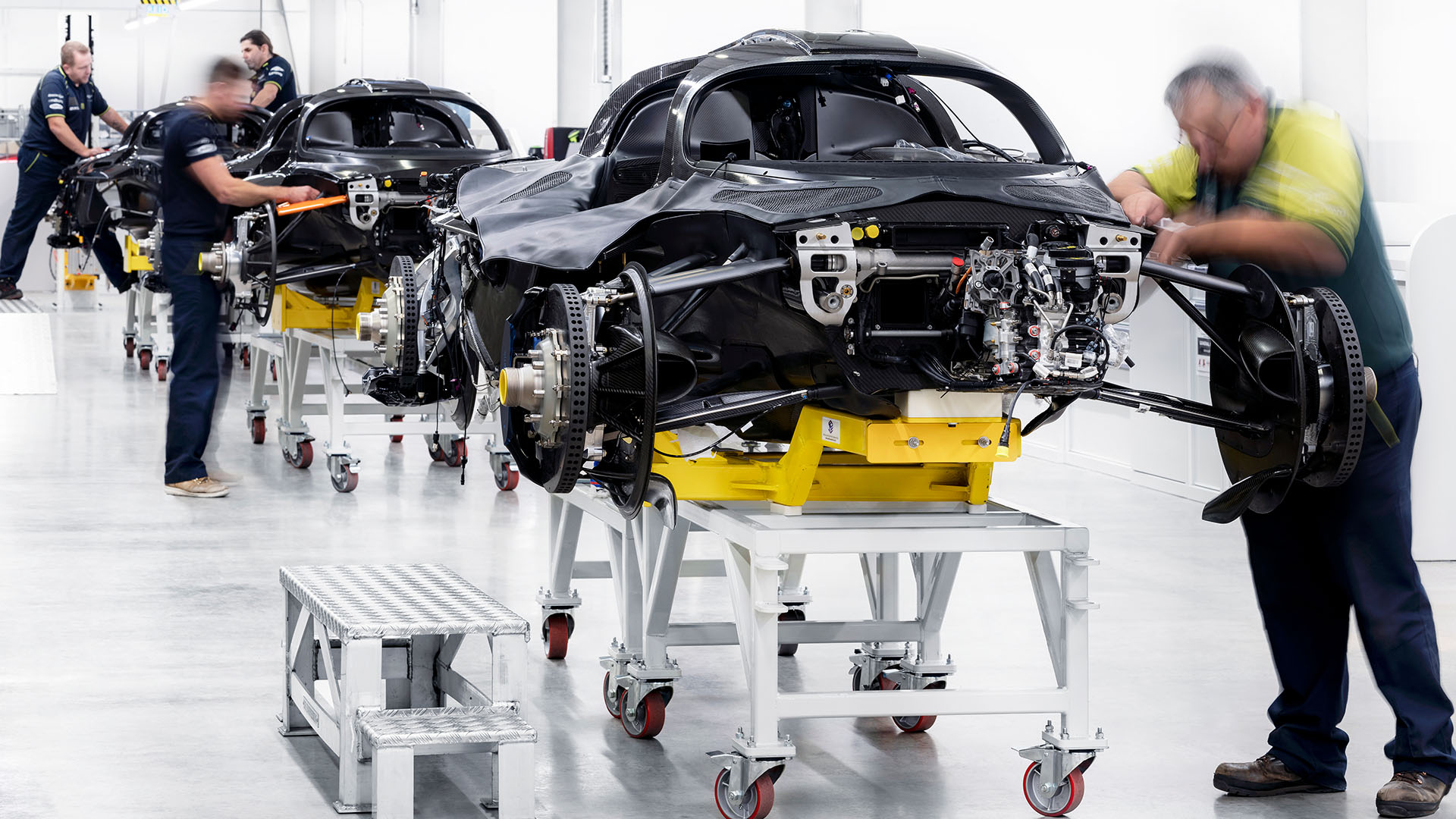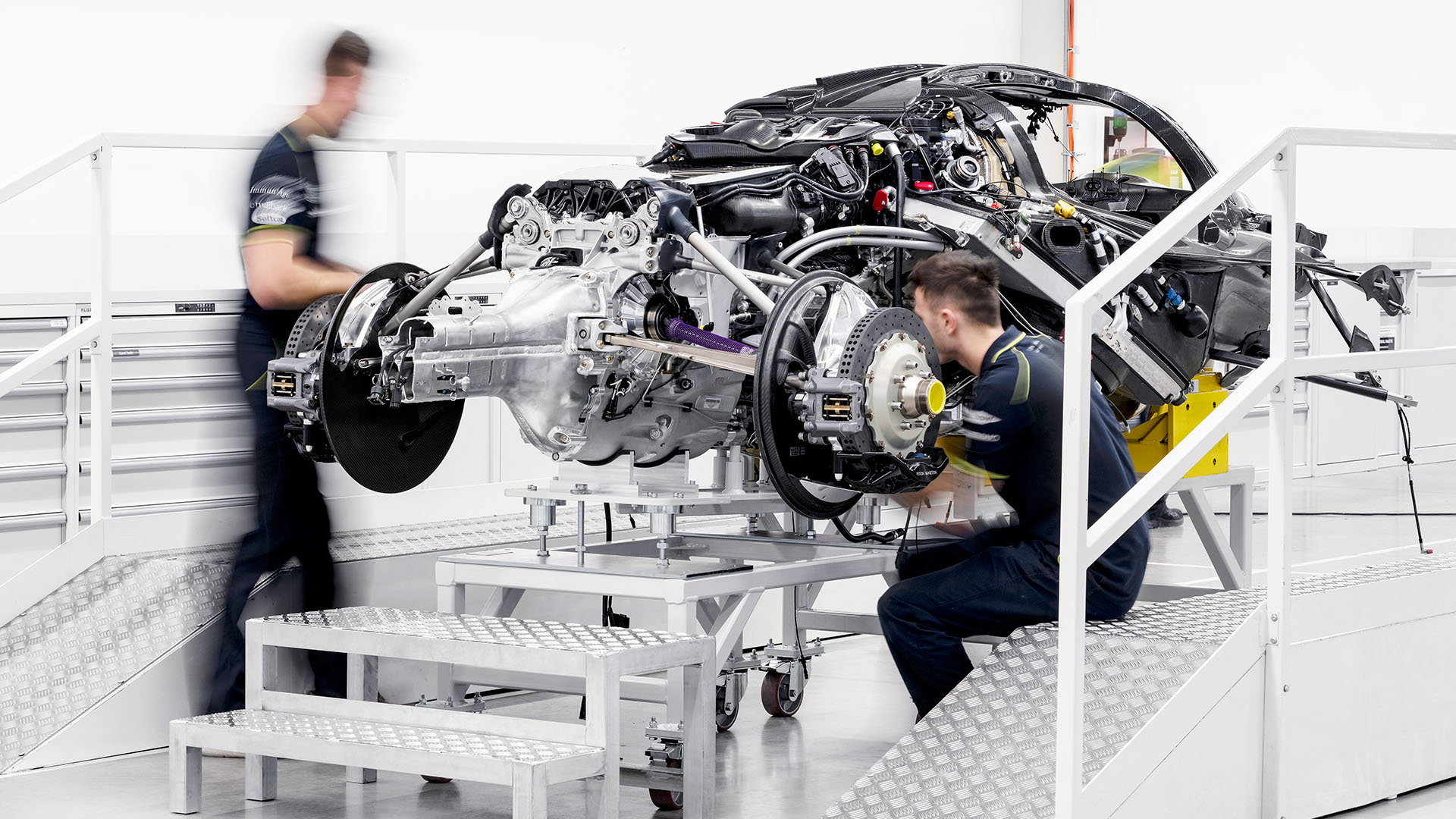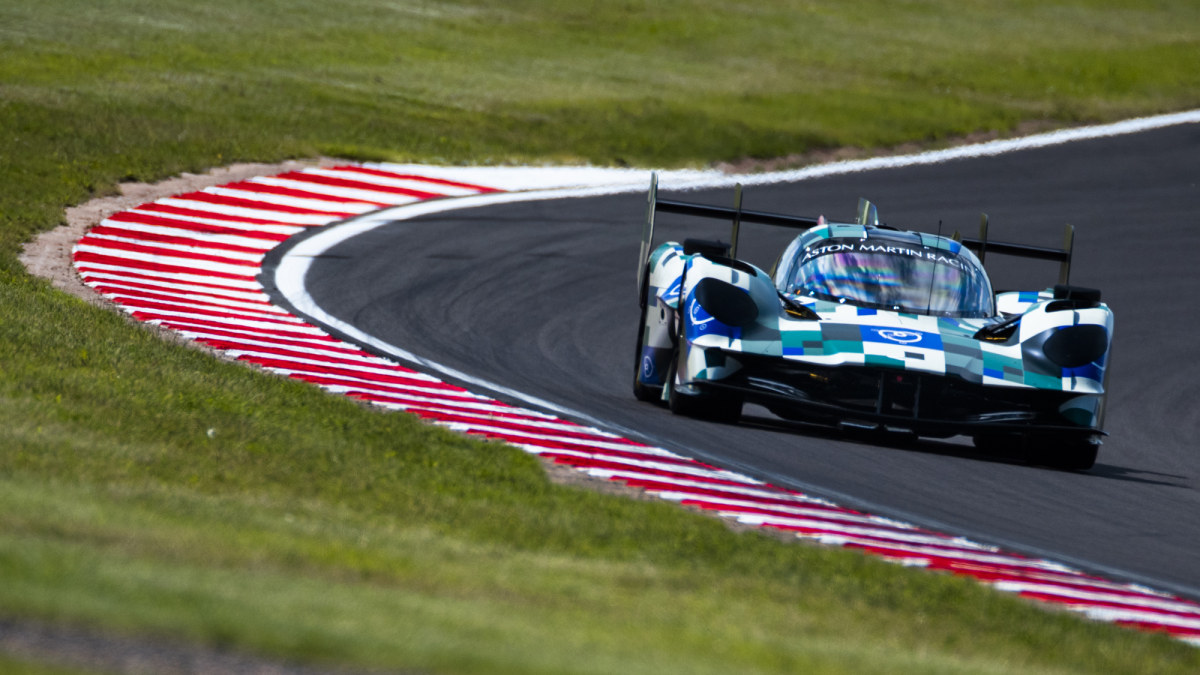It has taken nearly 5 years for Aston Martin to finally have the first unit of their AM-RB 001, also known as the Valkyrie, ready to be delivered to a customer, it was back in 2017 when they showed the car as a concept for the first time at the Geneva Motor Show, at the time they intended to use a 6.5-liter NA V12 engine designed and built by Cosworth to be combined with a Rimac battery pack for a 1:1 power-to-weight ratio – 1 bhp per kilo, an estimated power output between 900hp and 1000hp was listed, production was to be limited at 150 units for the road, and 25 track-only versions.


Aston Martin and Red Bull Advanced Technologies teamed up to create this new hypercar, hence the internal AM-RB 001 designation and the final figures were a hybrid powertrain with a Cosworth-built 65-degree naturally aspirated 6.5-liter V12 paired with a Rimac-sourced battery-electric system, with a total power output of no less than 1,176 hp and 664 lb-ft of torque, with 106 hp of that coming from the electric motor, do note that the maximum hp from the engine is reached at the screaming 11,100 rpm!


Two years later, in 2019 we finally saw the first Aston Martin Valkyrie in action, at Silverstone ahead of the 2019 British Grand Prix, driven by Chris Goodwin who had this to say about the car: “I’ve driven this car around Silverstone for countless hours on the simulator at Aston Martin Red Bull Racing’s HQ and in many other sportscars throughout my career, but to drive Aston Martin Valkyrie here today feels exceptionally special, of course, we still have a lot of development work to go but we can now begin to really push the physical testing process and realize the capabilities of what we have developed over the past months.”


Development of this Aston Martin hypercar continued, and by March 2020 we finally saw a car being tested on the road, without any camouflage this time, equipped with a Rimac-developed Kinetic Energy Recovery System (KERS) style electric motor and battery, instead of a constant electric assist. The KERS system will dump power to the rear wheels on hard acceleration and will recover energy during braking. The aerodynamics of the car were developed alongside the Red Bull Racing Formula 1 team and used both over car airflow and venturi ground effects to suck the car onto the road. No official statistics on cornering G or total downforce have been confirmed by Aston Martin, but it is expected that at speed, the car will effectively double in weight from the force of the air moving over, through, and around it.
Back in early 2020, the intention was to have the first customer car from the 150 production run being delivered by August 2020, that didn’t happen due to the worldwide pandemic, and deliveries were pushed to Q2 of 2021, sadly that wasn’t possible either and it seems the first client will be receiving his very own Aston Martin Valkyrie in Q4 of 2021 instead, the price for this road-going monster is rumored to be between £2m and £3m or about $2.46 million to $3.69 million.


Note that Aston Martin has already unveiled the Valkyrie AMR Pro in meantime, thanks to the aerodynamic efficiency, the Valkyrie AMR Pro offers track performance previously only seen in Formula One cars, a lot of weight has been saved on the Valkyrie AMR Pro by removing the entire hybrid system, using an extremely light carbon fiber body, carbon fiber suspension wishbones, built to compete at the 24h of Le Mans, the design has been created to be able to lap the 8.5-mile Circuit de la Sarthe in a mere 3 minutes and 20 seconds, only 40 units of the AMR Pro version will be made.


In August of 2021 we found out the entire production for the Aston Martin Valkyrie had sold out, all of the 150 units were gone, so Aston Martin did what any car builder would do to maximize profit … create an additional version, hence the Valkyrie Spider was born, this time, limited to 85 units in total, and according to the official press release from Aston Martin, these are already over-subscribed and allocations would only begin shortly, available in both left and right-hand drive version, the first deliveries were scheduled for H2 2022 but it seems not all that have put their name down will eventually receive this amazing hybrid topless hypercar.
Thanks to a lot of development and slight modifications between the Valkyrie and the new Valkyrie Spider, Aston Martin managed to keep the weight gain on the Spider to a strict minimum … the result is still a top speed in excess of 350 km/h with the roof in place while driving topless will still get you over 330 km/h … all while sitting nearly in the center of the car, fixed in place by a six-point safety harness.


Finally, in early November 2021, it seems the very first customer will be receiving his (or hers) Aston Martin Valkyrie as the car is completed at the Gaydon HQ, production of this hypercar is started and deliveries will be happening in the coming weeks. Aston Martin Chief Executive Officer, Tobias Moers commented: “It is an immensely proud moment for us to complete our first-ever hypercar. The Aston Martin Valkyrie program has tested everyone who has worked on it to the limit but the commitment to the dream has produced a truly incredible car, an F1® car for the road. The Valkyrie is born out of the steadfast dedication of a large group of highly skilled engineers and technicians who have worked tirelessly to get Valkyrie to the production stage. I’m sure our customers will be delighted with what they have achieved.”


As with every Aston Martin sports car, the Valkyrie is built at the UK Headquarters in Gaydon, where a dedicated project delivery team manages the build right through to delivery in a specially commissioned Valkyrie production area, a team of highly skilled technicians will hand-built each of the 150 cars, with each Valkyrie taking over 2000 man-hours to create. Before each Valkyrie is delivered, it is track-tested at the Aston Martin high-performance facility at the home of British Motor Racing in Silverstone where much of the development of the hypercar has taken place over the last five years.







